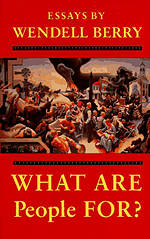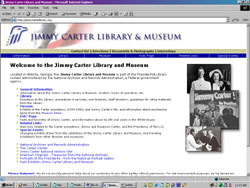
A Selected Annotated Bibliography for
"Cultivating Homelands"
by Diane
Shearer
Introduction
The following bibliography reflects sources chosen for their specific content application within "Cultivating Homelands" or for their relevance in teaching skills, such as interviewing and collecting oral history. For ease of use, the bibliography is divided into the categories of books, articles, on-line sources, and video.
BOOKS
Agee, James. Let Us Now Praise Famous Men. Boston: Houghton, Mifflin, 1960.
Still one of the best sources for Depression Era pictures and first-hand information on tenant farming in the South.
Ancona, George. The American Family Farm: A Photo Essay. San Diego: Harcourt Brace, 1989.
Pictorial essay of the American family farm. Focuses on the daily lives of three families in Massachusetts, Georgia, and Iowa. (Juvenile nonfiction).
Atlanta in 1890: 'The Gate City.' Macon, GA: Mercer U.P., 1986.
Original 1890 manuscript with introduction and annotations. Republished by the Atlanta Historical Society.
Berry, Wendell. Home Economics. New York: North Point Press, 1987.
Of particular interest in this collection of fourteen essays are "Six Agricultural Fallacies," "A Defense of the Family Farm," and "Does Community Have a Value?"
Berry, Wendell. What are People For? New York: North Point Press, 1990.
The title essay is a short, provocative piece questioning whether the mass migration from farms to cities over the last century is necessarily a good thing. "The Work of Local Culture" is an excellent look at the ingredients necessary for establishing and sustaining communities.
Brown, Rodger Lyle. Ghost Dancing on the Cracker Circuit: The Festivals of the American South. Jackson: University Press of Mississippi, 1997.
Descriptions of various festivals. Includes a bibliography.
Coulter, E. Merton. Georgia: A Short History. Chapel Hill, UNC Press, 1947.
Still one of the most enjoyable histories and reliable beginning source for many topics.
Georgia Department of Archives and History. Vanishing Georgia. Athens: UGA Press, 1982.
Good source for pictures of city and town life, social life and customs.
Henson, Pamela M. et al. Oral History Project Procedures Manual. Washington, D.C.: Archives and Special Collections of the Smithsonian Institution, 1982. (Revised 1988).
While this manual was produced in order to assist those compiling oral histories from retired members of the Smithsonian staff, it provides some good insights for anyone collecting and writing oral histories. Especially helpful sections include those on interviewing techniques and copyright information specific to use of tapes and transcripts. Bibliographies on oral history, audio-visual techniques, and videohistory.
[For a free copy of the manual: e-mail Jennifer Nichols at nicholsj@osia.si.edu]
History of the Baptist Denomination in Georgia. Easley, SC: Southern Historical Press, [1976?].
Reproduced from an 1881 edition first published in Atlanta. Contains a biographical compendium and portrait gallery of Baptist ministers and other Georgia Baptists.
Lassiter, Patrice. Generations of Black Life in Kennesaw and Marietta. Charleston, SC: Arcadia Pub., 1999.
Pictorial history. Part of the Images of America series.
McQuade, Hank. Light Up Our Land: Georgia Electric Membership Corporation, the First Fifty Years. Atlanta: The Corporation, 1990.
A promotional, in-house publication but helps document how important the arrival of electricity was in changing rural life.
McWhiney, Grady. Cracker Culture: Celtic Ways in the Old South. Tuscaloosa, AL: University of Alabama Press, 1988.
Traces origins of elements of Southern culture. Includes bibliography.
Raper, Arthur. Tenants of the Almighty. New York: The Macmillan Co., 1943.
The story of Greene County, GA and its unified farm program.
Sampson, Gloria. Historical Churches and Temples of Georgia: A Book of Watercolors and Drawings. Macon, GA: Mercer U.P., 1987.
Teaching with Documents. Washington, D.C.: National Archives and Records Administration, 1989.
Practical suggestions for using documents in various classroom settings. Over 50 public domain documents from 1780's through the 1970's are discussed and illustrated.
Temple, Sarah Blackwell. The First Hundred Years: A Short History of Cobb County in Georgia. Atlanta: Walter W. Brown Publishing Co., 1935.
Generally located in Special Collections. Includes information on cemeteries.
Wilson, Charles Reagan and William Ferris. eds. Encyclopedia of Southern Culture. Chapel Hill: The University of North Carolina Press, 1989.
From agriculture to porches to urbanization --or any topic connected with the South--- this reference book is an excellent starting point. Well-written articles with cross-referencing and additional bibliographies provided.
ARTICLES
Greenberg, Paul. "'Redneck' is Not a Dirty Word." Encountering Cultures. Ed. Richard Holeton. Englewood Cliffs, N.J.: Prentice Hall, 1995. 49.
A good-natured response to a Smyrna, GA, historical society president's having demanded an apology from National Geographic for its use of the word redneck to describe Smyrna.
Head, John. The Uncertain Season: The Farm Crisis in Georgia. (series) The Atlanta Journal-Constitution. 21 May - Sept., 2000.
A four-part feature article with photos that takes a close look at the problems and frustrations of a Worth County, GA, farmer at the end of the twentieth century.
Osinski, Bill. "Real Folks' Real Feelings Taking Stage in Colquitt." The Atlanta Journal-Constitution 8 Oct. 2000, H9.
Article about the 2000 Swamp Gravy production Love and Marriage.
Seabrook, Charles. "Carter Country." The Atlanta Journal-Constitution 12 Nov. 2000, M1-2.
Long article on Jimmy Carter's rural boyhood and the public opening of his childhood home in Archery, GA.
DIGITAL RESOURCES
Atlanta History Center. http://atlantahistorycenter.com
Each April the center sponsors the Spring Folklife Festival. Demonstrations and hands-on learning about farming life in the Georgia Piedmont.
Jimmy Carter Library. http://jimmycarterlibrary.org
Home page for the Carter Library and Museum. April 20, 2000.
Brief biographies of Carter and his wife. Texts of selected speeches. A bibliography of children's literature about Carter. Procedures for getting permission to do research at the library.
National Archives and Records Administration home page. http://www.nara.gov/index.html July 5, 2001.
Of most interest is "The Digital Classroom: Primary Sources, Activities, and Training for Educators and Students." <http://www.nara.gov/education/classrm.html> Several subcategories. "History in the Raw" presents an argument for using primary sources such as diaries, letters, drawings, and memoirs in the classroom and includes suggestions for teachers on where to locate local primary source materials.
"Document Analysis Worksheets" are excellent handouts to download for students to use in analyzing written texts, photos, artifacts, cartoons, posters, maps, sound recordings, and movies.
Swamp Gravy. http://swampgravy.com
Provides information on the history of Swamp Gravy, dates for upcoming productions, and a summary of The Swamp Gravy Institute.
Teaching with Historic Places (TwHP). http://www.cr.nps.gov/nr/twhp/index.htm ParktNet, National Park Service, July 2, 2001.
Lesson plans, information on how to use places, and information on how to obtain an author's packet that will help determine what local sites would be good to use for lessons.
VIDEO
Vanishing Georgia. Atlanta: GPTV, 1996.
A one-hour nostalgia trip recalling when swamp families lived in the Okefenokee, schools were one room, and turpentine was a big industry. Of most local interest:Atlanta's changes and the history of the Mathis Dairy in DeKalb County.
Rural Community Inquiry: Reflecting on Research Processes
by Sarah Robbins
Studying Community in Canton, Georgia
by Peggy Corbett
A Bridge to the Past:The Euharlee Covered Bridge a pdf document (Acrobat Reader needed for viewing)
by Amanda Closs, KSU Honors Student
The Shields-Ethridge Farm a pdf document (Acrobat Reader needed for viewing)
by Stacie Janecki, KSU Honors Student

Content Design/Management: Traci Blanchard,Stacie Janecki and Marty Lamers
Home | Curricular
Program | Thematic Content
Classroom Resources
| Community Projects |
Who We Are
© 2000-2001KCAC
No materials on this website should be copied or distributed
(except for classroom use) without written permissions from KCAC.
Questions? Comments? Contact KSU webmaster
Jim Cope.
